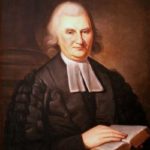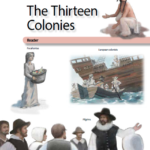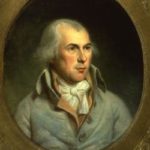This lesson explores the Supreme Court case Tandon v. Newsom (2021) regarding religious liberty.Throughout the COVID-19 pandemic, the state government of California along with many of its county governments placed restrictions on gatherings of people. One of their regulations had the effect of preventing more than three households gathering together at a time for any in-home prayer and Bible studies. Plaintiffs sued the state, arguing that these restrictions violated the First Amendment since many secular businesses were allowed to have more than three households of people within it at any time, and that therefore religion was being specifically discriminated against. The Supreme Court recently released a per curiam (unsigned) decision concerning the constitutionality of these regulations.
Freedom of Religion: Establishment Clause
The First Amendment has two clauses related to religion: one preventing the government establishment of religion (the establishment clause) and the other protecting the ability to freely exercise religious beliefs (the free exercise clause). Students examine the First Amendment’s Establishment Clause: why it was included in the Bill of Rights, the issues it addresses, and how the Supreme Court has interpreted it over time.
EEOC v. Abercrombie (2015)
Can an employer be held liable under Title VII of the Civil Rights Act of 1964 for refusing to hire an applicant based on a religious observance or practice if the employer did not have direct knowledge that a religious accommodation was required? This case summary shows how the Supreme Court answered that question in 2015.
James Madison and Religion

This short video reviews James Madison’s attitudes towards religion. Although he believed that religious belief was essential in a virtuous republic, he also was a religious libertarian for whom God alone was the “lord of conscience.” Professor Jeffry Morrison suggests that Madison’s Calvinist teachers (e.g., Dr. John Witherspoon) shaped his belief that government should be blind toward religion.
Voices of History
Voices of History is a collection of eight Bill of Rights Institute curriculum resources including Being An American, Preserving the Bill of Rights, Founders and the Constitution, Supreme Court DBQs, Liberty and Security in Modern Times, Religious Liberty: An American Experiment, and Heroes and Villains. Teachers will have free access to each resources’ lessons plans and handouts.
African American Religious Leadership and the Civil Rights Movement
The modern Civil Rights Movement was the most important social protest movement of the twentieth century. People who were locked out of the formal political process due to racial barriers were able to mount numerous campaigns over three decades to eradicate racial injustice and in the process transform the nation. In its greatest accomplishment, the Civil Rights Movement successfully eliminated the American apartheid system popularly known as Jim Crow. Registration is required to view this resource. Free registration for students and teachers required to access resource.
Constitutional Index – No Religious Test Clause
The Constitutional Index breaks down the U.S. Constitution by Section, Amendment, and Clause and contains broader topics and themes. These are used to cross-reference Library resources in an effort to annotate constitutional history.
Wisconsin v. Yoder (1972)
Under what conditions does the state’s interest in promoting compulsory education override parents’ First Amendment right to free exercise of religion? This resource is a case summary of Wisconsin v. Yoder, which tested the right of parents to withdraw their child from school for religious reasons.
The Thirteen Colonies (CKHG Unit)

This unit explores the development of three regions of English colonies using primary source documents and imaginative narratives. Across 35 lessons, students explore Jamestown, labor by indentured servants, and the reliance on enslaved workers in the southern colonies, look at the motives influencing the Pilgrims and Puritans in New England and the financial and religious reasons for settling the Middle Colonies.
James Madison and the First Amendment

This short video traces the evolution of Madison’s attitude towards the religious liberty guarantees of the First Amendment. Initially opposed to a Bill of Rights as both inappropriate and dangerous, Madison’s views changed as a result of political and philosophical considerations. Professor Jeffry Morrison emphasizes Madison’s belief that religion should play a vital but informal role in the life of the republic.